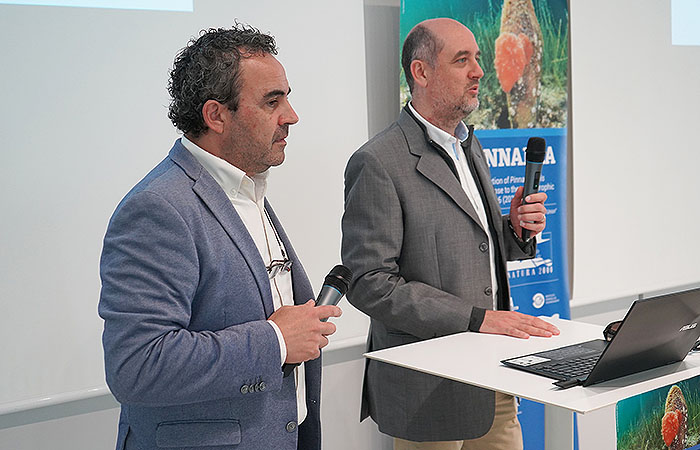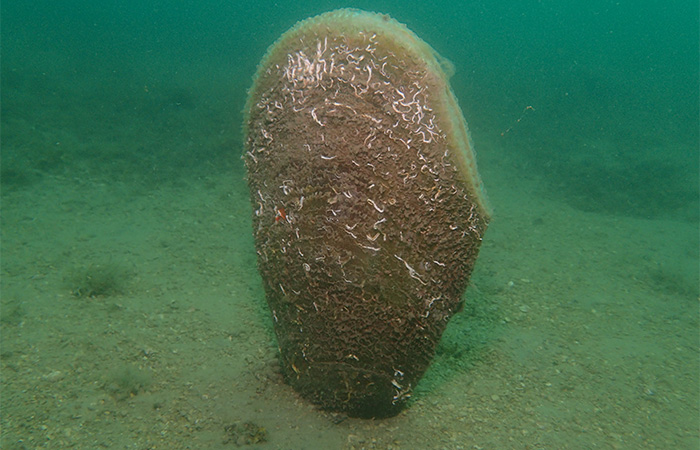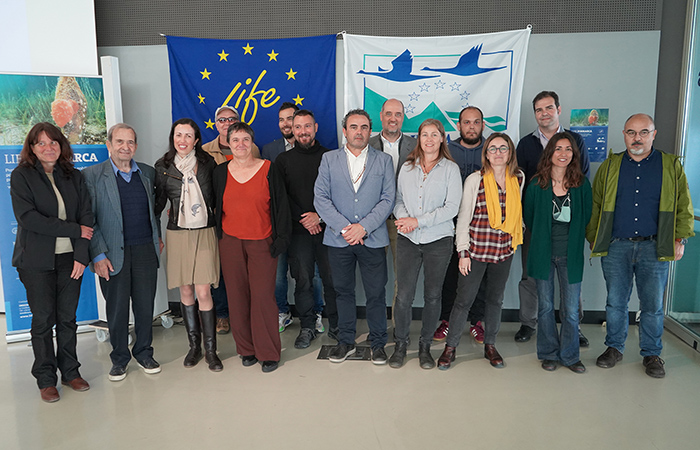Life Pinnarca
At the beginning of May, the Environment and Marine Science Research Institute of the Catholic University of Valencia (IMEDMAR-UCV) has presented its leading project ‘Life Pinnarca’ (LIFE20-NAT/ES/001265), whose objective is the conservation of the nacra (Pinna nobilis). This bivalve mollusc, is currently in critical danger of extinction due to a serious disease that began to affect the populations of shellfish at 2016.
Life Pinnarca, is a project financed by the LIFE programme, the financial instrument of the European Union to support environmental, nature conservation and climate action projects. The consortium brings together the following research centers: Institute for Research in Environment and Marine Science (IMEDMAR-UCV), the University of Alicante; the Mediterranean Institute for Advanced Studies (IMEDEA) and the Spanish Institute of Oceanography (IEO), both belonging to the Higher Council for Scientific Research (CSIC); and the NGO ‘Ecologistas en Acción’. Three other European entities also participate in Life Pinnarca: The Paul Ricard Oceanographic Institute (France), the Federico II University of Naples (Italy) and the University of the Aegean (Greece).
The project includes actions to protect the species, to disseminate the endemic situation of the shellfish, as well as the attempt to save specimens resistant to illness. In addition, Life Pinnarca also contemplates among its activities the search for healthy nacras to reproduce them in captivity, as well as the improvement and environmental management of the habitats where they can still be found, such as the Ebro Delta or the Mar Menor, as well as various coastal lagoons from Spain, France, Italy and Greece.
“When scientists come together to work for the same goal, solutions are going to be found. We are receiving commitments to adhere to the project from institutions in Croatia, Montenegro, Algeria, Tunisia and Egypt. In these countries, censuses of nacra populations are beginning to be carried out, which is crucial”, assured the IMEDMAR-UCV scientist José Rafael García March, principal investigator of the project.
Maite Vázquez: “it constitutes an emblematic species for the coastal areas”
The joint struggle of scientists from different countries is fundamental for the researcher Maite Vázquez (IEO-CSIC): “In the case of the nacra, it only exits at the Mediterranean region, it constitutes an emblematic species for the coastal areas. Its situation has generated great scientific concern, as is the case with the rest of marine biodiversity, which is highly threatened by different factors. We cannot afford the current rates of biodiversity loss because they seriously affect the stability of the different ecosystems and their resistance to changes and impacts at a global level”.
Nardo Vicente: “We will save the species in the coastal lagoons”
Marine scientist Nardo Vicente, a French-Spanish researcher who was part of Jacques Cousteau’s team on the famous ship Calypso, recalled the moment when the parasitic disease reached the French coast: “In the Corsican reserve where I have been working since 1975, the shellfish were all cheers in the summer of 2018; in October they were all dead. It was a calamity, this species has suffered a true pandemic. The nacra is disappearing from all over the Mediterranean, from Spain to Turkey”.
“Luckily, it has been observed that there is a place where the species is resisting: the coastal lagoons. I remember when in 2019 I studied a marine population of shellfish located just four meters deep; they were all alive and reproducing. It is in those lagoons where we will save the species and with this project there is hope of being able to save it; in fact, I think it will survive”, Vicente pointed out.
On the other hand, the presentation act of Life Pinnarca has included, in addition to the exposition of the project by its national and international representatives, the presentation of the pre-selected designs within the mascot and logo search contest for the project.


OLYMPUS DIGITAL CAMERA 



